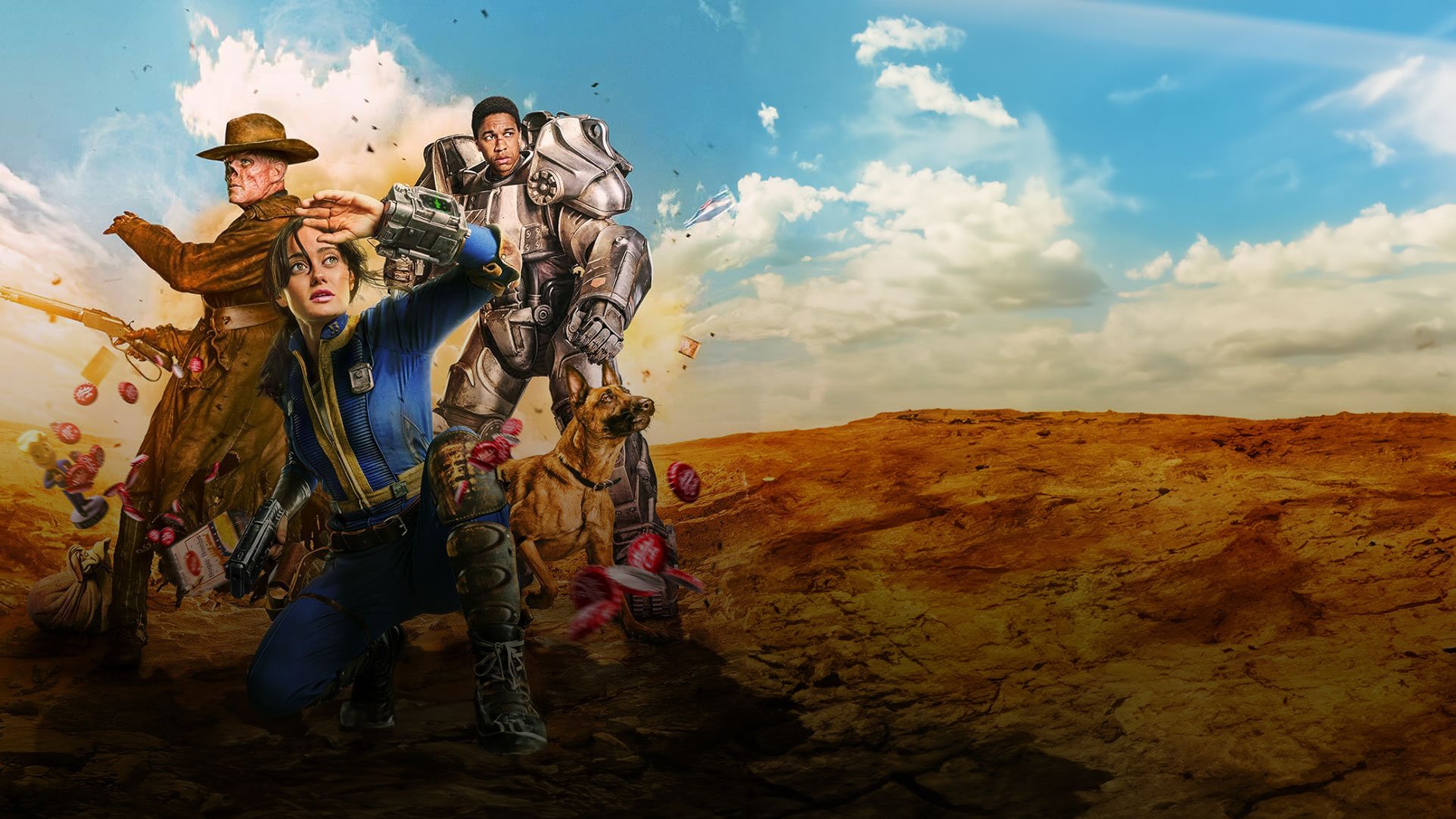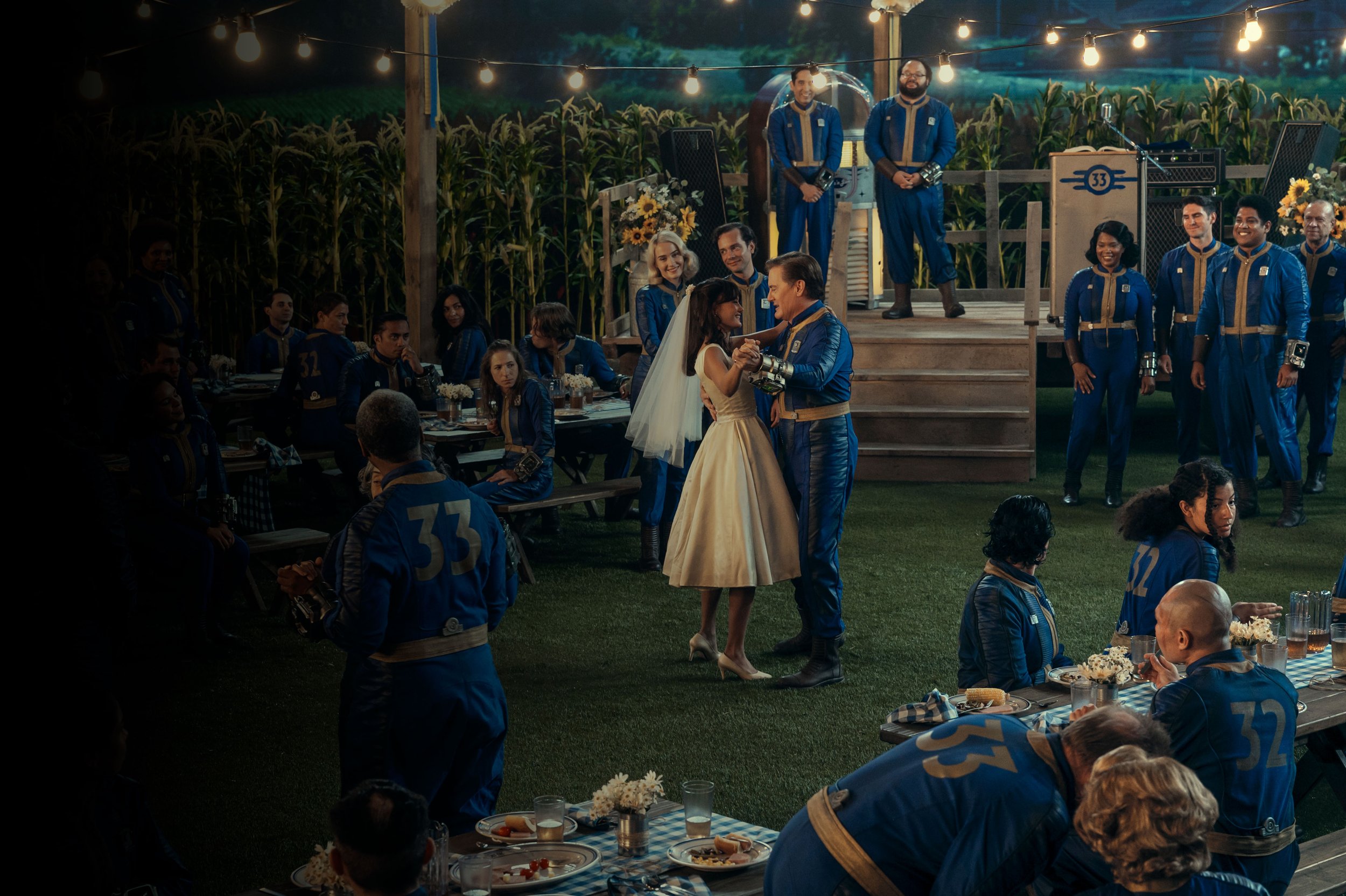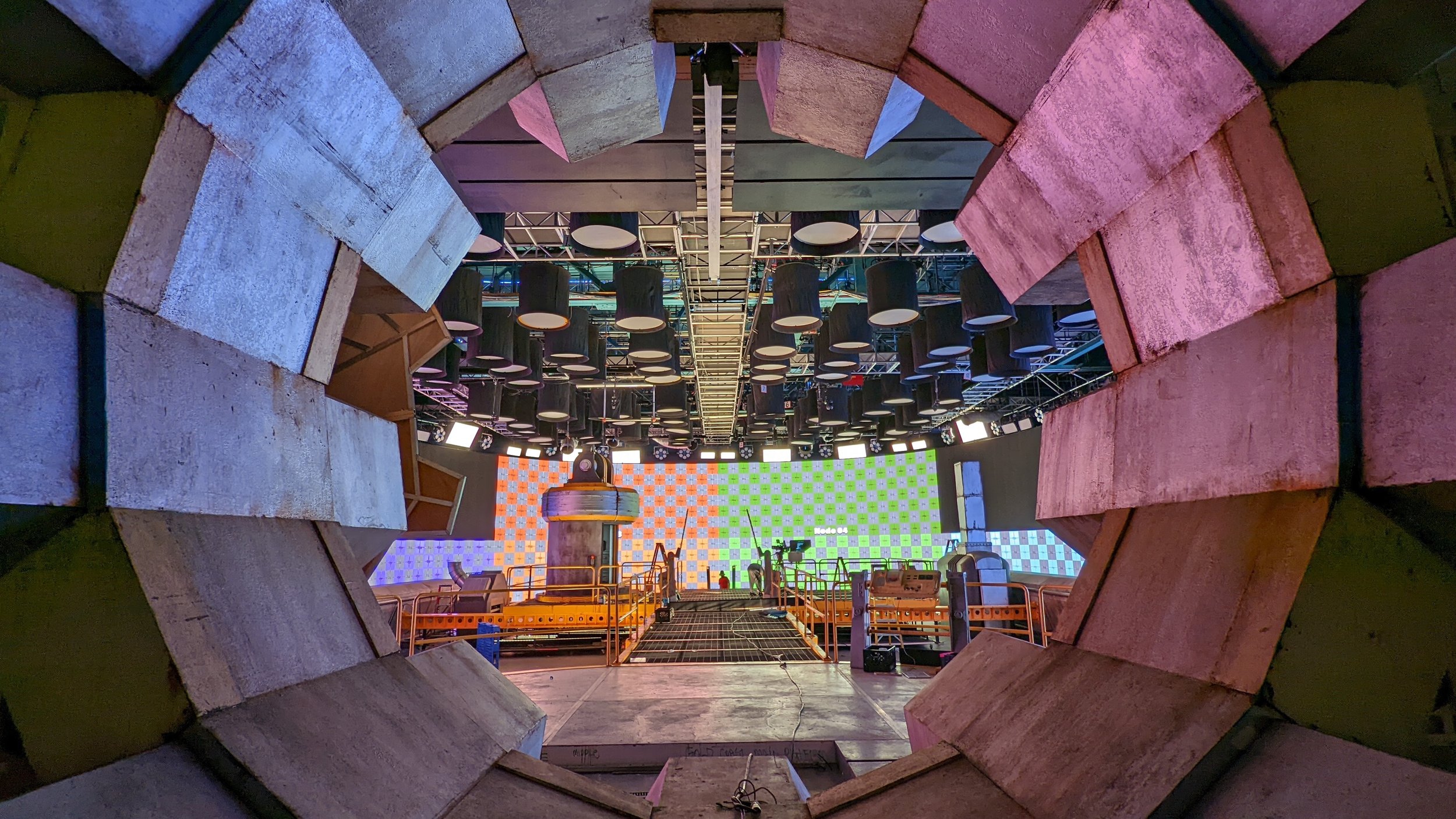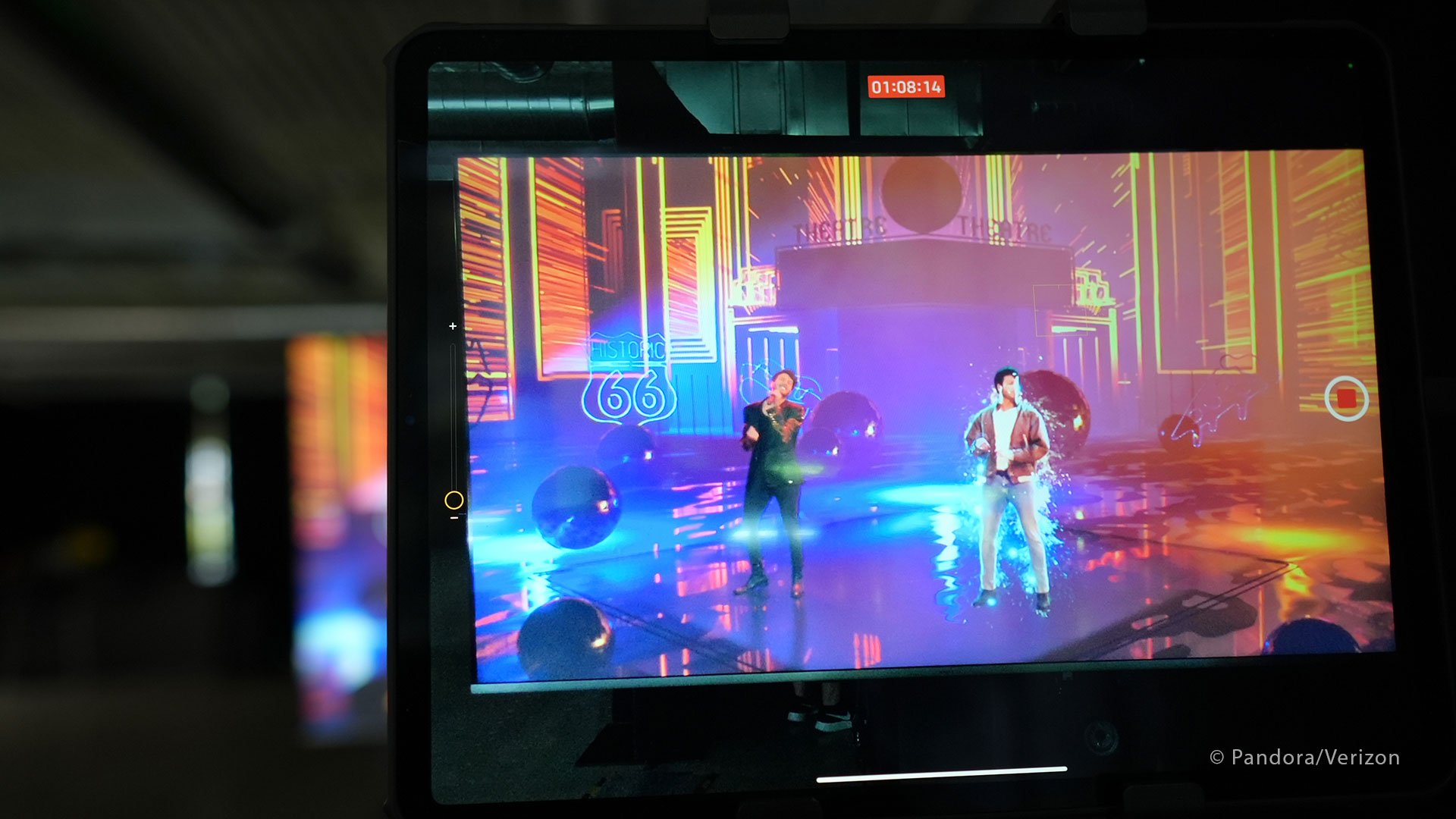
Fallout TV Series:
VAD, Systems Design & LED Volume Operations
Overview
Brand
Fallout
Amazon Studios
Client
Kilter Films
Technology
LED Volume
Real-time 3D assets
In-Camera Visual Effects
Platform
TV
Industry
TV/Film
Awards
Telly Awards
Introduction
Fallout is an American post-apocalyptic drama TV series based on the renowned Interplay/Bethesda RPG video game franchise. The series was crafted by Lisa Joy and Jonathan Nolan under their production banner, Kilter Films, exclusively for Amazon Prime Video.
“Viewers who love the games will relish the chance to discover new aspects of the Fallout universe. Those who’ve never played them will enjoy a vivid, brutal romp with flashes of absurdist comedy and set in an engrossing, richly detailed world.”
— BBC
The brief
The producers of Fallout faced the challenge of telling a story set in a dystopian fantasy world. In this setting, picking up a camera and shooting on location is not always an option. The brief was to bring the post-apocalyptic world to production using the most advanced LED volume technology available while being faithful to Fallout’s very specific patina.
The solution
Expanding on our collaboration with Kilter Films on Westworld, we joined the creative process before the project was fully green-lit. We started by assisting in the initial design phase of an LED Volume located in Bethpage, Long Island. Very few stages were available then and almost none would have met the production’s requirements. Working with our development partners we completed construction of the stage with Manhattan Beach Studios and Fuse Technical Group. We then commissioned the volume and brought the various technical systems online in preparation for the shoot. We combined camera tracking solutions with custom object tracking.
Technical design and preparation
In addition to the main LED walls, multiple large portable panels were calibrated and tracked inside the volume. These custom-made panels with built-in tracking systems allowed for easy reconfiguration in the nDisplay system without recalibrating the volume each time we wanted to move a ‘wild’ wall in quickly on set. This flexibility meant that if additional images were needed on the floor or inside a particular blocking, the portable screens could be wheeled in – fully logged – and display the right images relative to the master camera, enhancing efficiency on set.
We tested lighting alongside the DP and gaffer by integrating a DMX lighting control system into the dim-board. The project was slated to be shot on 35mm film – which is unusual for LED projects. Critically, we fine-tuned the genlock, data recording, timecode, content management, and systems operations with the Fuse TG team in preparation for the principal photography. The film component introduced a new dimension beyond playback regarding calibration and colour science. Shooting on film required extensive testing and even minor tweaks in the grade. Unlike some productions, this entire process was so successful that imagery on the LED screens was not replaced with similar high-resolution VFX clips in post. The production managed to capture final pixels on stage and utilize them in the final edit.
Concepting and content
On the content front, we collaborated with the filmmakers to determine which elements from the script were best suited for utilization on an LED Volume. The setting of Fallout provided several locations that worked well on an LED Volume. With In-Camera Visual Effects (ICVFX), we knew we could drop the actors and the crew directly into a massive underground vault or a post-apocalyptic landscape. We worked with the production designer on concept artwork which helped identify which portions of those sets could be built practically and which would be modeled virtually.
Sets were built entirely virtually inside Unreal Engine, allowing for multiple opportunities to virtually scout the sets by putting the filmmakers into VR and letting them block out the action with virtual cameras and blocked character animation. As we identified which areas of the sets would be seen in more detail than others, we focused the creative attention on those areas, refining lighting and adding more fidelity. Overviews of the complete set were made in Unreal so the team could see where every storyboard frame was intended to be filmed from – in context – in real-time 3D.
Blending the physical and digital
The Visualization team used storyboards, real-time sets, and the blocked cameras from the virtual scouts to conduct both previz and techviz reviews with the filmmakers. Every shot was viz’d from the perspective of the camera, allowing the creatives to understand where and how the physical and virtual sets came together. We found these methods provided ample opportunities for the filmmakers to make creative decisions on framing, lighting, and action blocking very early in development and even helped the ADs schedule shoot days by visualizing how large pieces of equipment would enter the set and where they could be staged.
Some sets used 180-degree photography instead of real-time virtual 3D sets. We worked with drone operators to design a multi-camera capture solution and stitching workflows to create footage for the LED wall. Then we helped design custom software for playing back that footage on a 20x95ft screen in 6K resolution at 24fps. On the day, this was all shot through multiple simultaneous film cameras through the glass of a gimbaling aerial vehicle.
Camera tests allowed for both creative and technical review of the images projected onto the LED wall by looking through the lens of a digital camera with an applied film Lookup Table (LUT) to approximate the show's final look. Using that workflow, we adjusted the color of each virtual scene to blend seamlessly with the physical environment so that it appeared as intended once captured on 35mm film. Throughout development, we collaborated closely with the director to fine-tune the shoot day requirements, ensuring we could account for any special technical considerations that might arise from putting a camera in a given location.
Efficiency
Our Virtual Art Department was brought in as part of the Fallout Art Department, rather than a vendor, which is unusual for LED stage work. This seamless integration helped with the smooth running of the production. Another move that significantly improved the speed and quality of the work was having a dedicated cinematographer just on the LED volume for all episodes. This ensured all processes were streamlined and most of the lighting and calibration issues could be solved before the shooting of each new episode.
The impact
The world of Fallout is vast, dangerous, and logistically complex. Using in-camera visual effects, we were able to fit that enormous scope into the lens and bring the world of Fallout to screens.
We created four unique and vital environments in Unreal for use on the LED volume – the picnic area and vault door scenes in Vault 33, the cafeteria setting in Vault 4, and the New California Republic’s base inside the Griffith Observatory – this granted us unprecedented flexibility and efficiency outpacing alternative methods.
We also delivered critical creative development and stage operations by running asset management, virtual art execution, camera tracking systems, and data wrangling. All in a flexible and very effective LED volume that did not require extensive removal and replacement in post. It’s rare to have so much in-camera ICVFX work remain untouched during post – the volume delivered on the promise of final pixels in the camera.
“The set Howard and the art department built, combined with the assets that Ben Grossmann, AJ Sciutto and the team at Magnopus put together, created a flawless environment. We got the footage back after the first day, and we couldn’t tell where the practical set ended and the virtual one began...”
— Jay Worth, Visual Effects Supervisor on Fallout

“Magnopus brings Amazon’s Fallout series to life with virtual production powered by Unreal Engine”
Discover similar projects from Magnopus
Production
Director of Virtual Production - AJ Sciutto
(ep. 101 - 108)
Virtual Production Supervisor - Kathryn Brillhart
(ep. 101 - 104)
Virtual Production Supervisor - Kalan Ray
(ep. 104 - 108)
Virtual Production Lead - Katherine Harris Mojica
(ep. 101 - 104)
Virtual Production Producer - Billy Bonifield
(ep. 101 - 104)
Virtual Production Producer - Gabriel Blake
(ep. 104 - 108)
Virtual Production Producer - Andres Martinez
(ep. 104 - 108)
XR Producer - Devon Hubner
(ep. 101 - 104)
Virtual Production Manager - Michelle House
(ep. 101 - 104)
Virtual Production Manager - Ekaette Essien
(ep. 104 - 108)
Virtual Production Accountant - Kenny Lee
(ep. 101 - 108)
Virtual Production Creative Executive - Ben Grossmann
(ep. 101 - 108)
Full Credits
Virtual Art Department
VAD Supervisor - Craig Barron
(ep. 101 - 108)
VAD Lead / Virtual Gaffer - Devon Mathis
(ep. 101 - 108)
VAD Lighting & Look Dev Supervisor - Jeremy Vickery
(ep. 101 - 106)
VAD Environment Lead - Kellie Brewart
(ep. 101 - 105)
VAD Environment Lead - Sarah Hudson-Semple
(ep. 101 - 104)
VAD Environment Lead - Tony Kwok
(ep. 104 - 108)
VAD 2D Art Director - Frank Capezzuto III
(ep. 101 - 108)
VAD Matte Painter - Rocco Gioffre
(ep. 101 - 108)
VAD Artist - Lisa Barber
(ep. 101 - 108)
VAD Artist - Sidney Olluyn
(ep. 101 - 108)
VAD Artist - Liesbet Segaert
(ep. 101 - 104)
VAD Artist - Justin Dykhouse
(ep. 101 - 108)
VAD Artist - Daniel Naulin
(ep. 101 - 108)
VAD Technical Artist - Mark Allen
(ep. 101 - 104)
VAD Technical Artist - Hugh D. McCullom
(ep. 101 - 104)
VAD Animation & Rigging Lead - Michael K. Ryan
(ep. 101 - 104)
VAD Animation & Rigging - Gabriela Montes
(ep. 101 - 104)
VAD Animation & Rigging - Lorena Rother
(ep. 101 - 104)
LED Volume Operations
Creative Technologist - Addison Herr
(ep. 101 - 104)
Virtual Production Lead Engineer - Guillermo Quesada
(ep. 101 - 104)
Virtual Production Lead Engineer - Ross Rosewarne
(ep. 101 - 104)
Virtual Production Engineer - Lily K. Pitts
(ep. 101 - 104)
Virtual Production Mechatronics Engineer - Fabian A. Flores
(ep. 101 - 104)
Virtual Production Hardware Engineer - Julio Salcedo
(ep. 101 - 104)
Systems Administrator - Caio Andrade
(ep. 101 - 108)
Special Thanks
Kilter Films
Amazon MGM Studios
Manhattan Beach Studios
Fuse Technical Group
Virtuos
Satore Studios
All Of It Now
Let’s build tomorrow, today.
Ready to unite the physical and digital in new ways? We’re here to turn your vision into a reality.














